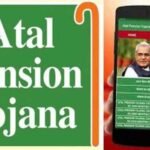Top 20 FAQs about the National Social Assistance Programme (NSAP)
1. What is the National Social Assistance Programme (NSAP)?
NSAP is a social security scheme launched by the Government of India in 1995 to provide financial assistance to the elderly, widows, disabled individuals, and families living below the poverty line (BPL).
2. What are the main objectives of NSAP?
The main objective of NSAP is to provide a minimum level of social security to vulnerable groups by offering financial assistance to the elderly, widows, and disabled persons from BPL households. It also aims to provide support to families who have lost their primary breadwinner.
3. Who is eligible for NSAP benefits?
Beneficiaries must belong to households identified as BPL by the state governments. Specific eligibility criteria vary for different schemes, such as age, widowhood, disability, or loss of the primary breadwinner.
4. What are the key schemes under NSAP?
The five main schemes under NSAP are:
- Indira Gandhi National Old Age Pension Scheme (IGNOAPS)
- Indira Gandhi National Widow Pension Scheme (IGNWPS)
- Indira Gandhi National Disability Pension Scheme (IGNDPS)
- National Family Benefit Scheme (NFBS)
- Annapurna Scheme
5. What is the pension amount provided under the Indira Gandhi National Old Age Pension Scheme (IGNOAPS)?
Under IGNOAPS, individuals aged 60 to 79 receive ₹200 per month, while those aged 80 and above receive ₹500 per month.
6. How much assistance is provided under the Indira Gandhi National Widow Pension Scheme (IGNWPS)?
Widows aged 40 to 59 from BPL households receive ₹300 per month under IGNWPS. The amount increases to ₹500 for those aged 80 and above.
7. What is the benefit under the Indira Gandhi National Disability Pension Scheme (IGNDPS)?
Persons aged 18 and above with more than 80% disability from BPL households receive ₹300 per month. The pension increases to ₹500 for beneficiaries aged 80 and above.
8. What assistance is provided under the National Family Benefit Scheme (NFBS)?
Under NFBS, a one-time lump sum payment of ₹20,000 is given to BPL families upon the death of the primary breadwinner aged 18 to 59.
9. What is the Annapurna Scheme?
The Annapurna Scheme provides 10 kg of food grains per month free of cost to elderly individuals who are eligible for the old age pension but do not receive it.
10. How are beneficiaries identified for NSAP?
Beneficiaries are identified by state governments based on their BPL status. The identification process is done using socio-economic and caste census data or other poverty-related criteria established by the state.
11. How is NSAP funded?
NSAP is a centrally sponsored scheme, with funding shared between the Central and State governments. The Central government provides financial support to the states, which then implement and disburse the funds.
12. How can one apply for NSAP benefits?
Beneficiaries can apply through their respective state government’s social welfare department or local administrative bodies like Gram Panchayats. The application process may vary across states.
13. Is NSAP applicable to all states in India?
Yes, NSAP is implemented in all states and union territories across India. Each state/UT is responsible for identifying beneficiaries and disbursing funds based on the central guidelines.
14. Can individuals receive benefits from multiple NSAP schemes?
Yes, if eligible, an individual can receive benefits from multiple NSAP schemes. For instance, a person could receive both the Old Age Pension and Annapurna Scheme benefits if they meet the criteria for both.
15. Is there any age limit for beneficiaries of NSAP?
Yes, each scheme under NSAP has a specific age limit. For instance, the Old Age Pension is for individuals aged 60 years and above, while the Widow Pension is for widows aged 40 to 59.
16. Is the pension amount under NSAP revised regularly?
The pension amount under NSAP is not revised regularly and has remained static for several years. However, some states may offer additional financial support on top of the central assistance.
17. What are the challenges in implementing NSAP?
The major challenges include accurate identification of beneficiaries, timely disbursement of funds, insufficient pension amounts, and administrative bottlenecks at the state level.
18. How can beneficiaries check the status of their NSAP pension?
Beneficiaries can check the status of their pension payments through the official state government portal or local social welfare offices. Some states also provide online tracking systems.
19. Is NSAP integrated with any other government schemes?
Yes, NSAP is often integrated with state-level social welfare schemes to enhance the coverage and benefits provided to the poor. Additionally, the use of Aadhaar for identification helps improve transparency and reduce leakages.
20. What is the way forward for improving NSAP?
To improve NSAP, there is a need for better targeting of beneficiaries, an increase in the pension amount, improved governance mechanisms, and leveraging technology for better delivery and tracking of benefits.








